Concrete floors have evolved from purely functional surfaces to stunning design statements that combine durability with aesthetic appeal. Modern concrete flooring offers endless possibilities through innovative techniques, finishes, and decorative treatments that transform ordinary slabs into extraordinary focal points. Whether you're designing residential spaces, commercial environments, or industrial facilities, concrete floors provide unmatched versatility at competitive costs. From polished surfaces that rival marble to textured finishes that mimic natural stone, today's concrete flooring solutions deliver both practicality and visual impact. These twenty concrete floor ideas showcase the remarkable range of styles, colors, and effects achievable with this versatile material.
1. Polished Concrete Floors with Diamond Grinding

Achieving mirror-like brilliance, polished concrete floors represent the pinnacle of modern flooring sophistication. Through progressive diamond grinding and chemical densification, concrete surfaces develop an lustrous sheen that reflects light beautifully while maintaining exceptional durability. This process involves grinding the concrete surface with increasingly fine diamond pads to create a glossy, smooth finish that showcases natural aggregates. Polished concrete floors contribute to open floor plans and loft-like layouts while being irresistibly sleek. The technique eliminates the need for additional coatings while creating a low-maintenance surface that resists stains, moisture, and wear. The most cost-effective way to dress up large spaces is to polish the existing slab through grinding, polishing and chemical treatments. Perfect for commercial spaces, retail environments, and contemporary homes, polished concrete floors offer timeless elegance with practical benefits that last decades.
2. Acid Stained Concrete Floors with Variegated Patterns
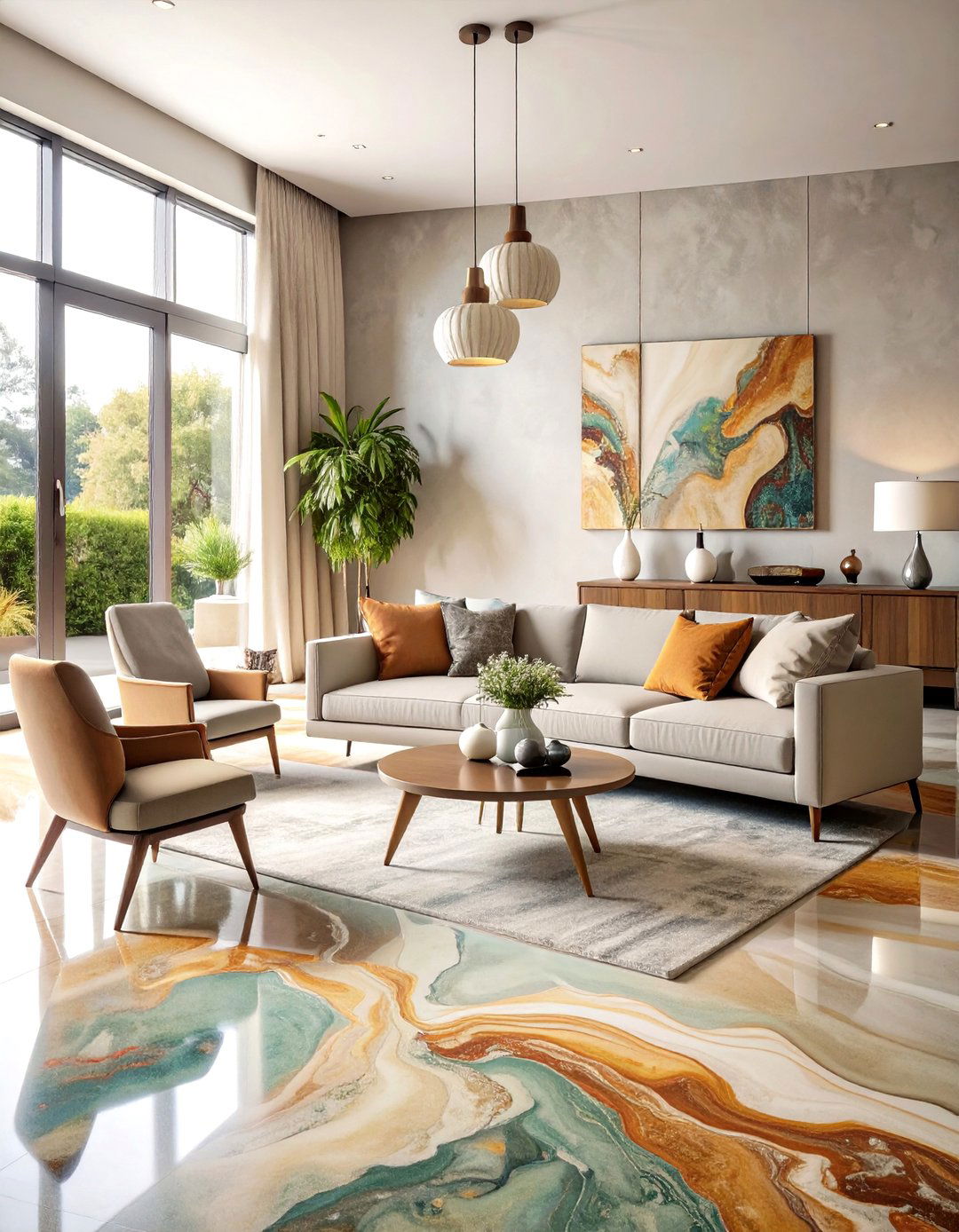
Creating natural beauty through chemical reactions, acid stained concrete floors deliver rich, translucent colors with unique marbled patterns. Acid stain chemically reacts with calcium compounds in concrete, permanently altering its color through metallic particles that bond with the surface. Acid-stained concrete is the most enduring and iconic decorative concrete installation, being at least 100 years old. The staining process produces variegated effects that cannot be replicated, ensuring each floor displays distinctive character. Costs begin at $0.47 per square foot, making it far less expensive than tile, carpet, or marble. Available in earthy tones including browns, greens, and blues, acid stained concrete floors resist ultraviolet light and weather damage. Unlike wood staining, properly applied acid-stained concrete floors don't chip, peel, discolor, or fade. This traditional technique offers authentic patina that develops beautiful aging characteristics over time.
3. Epoxy Concrete Floors with High-Gloss Finish
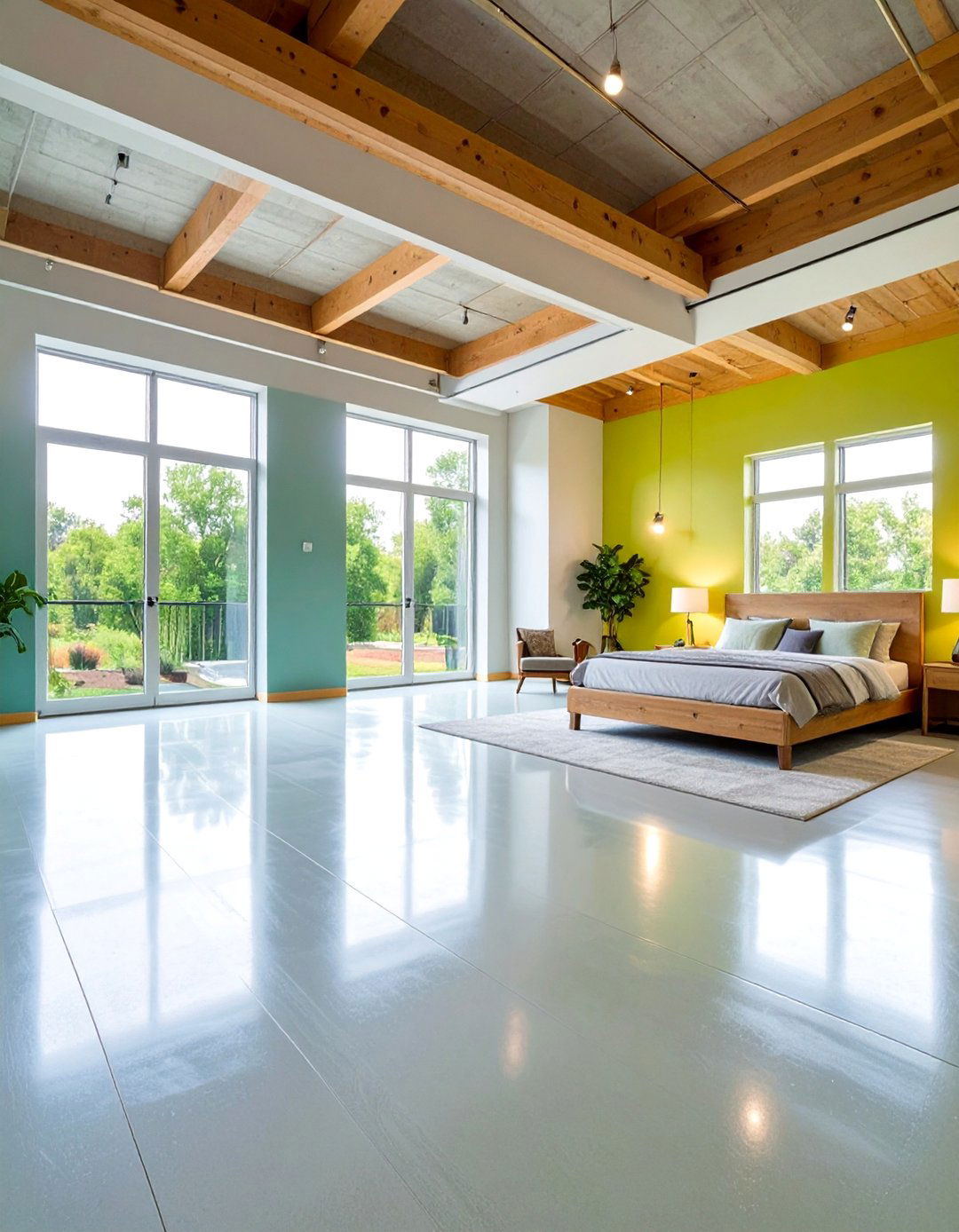
Transforming utilitarian surfaces into showroom-quality floors, epoxy concrete floors provide seamless, chemical-resistant surfaces with exceptional durability. Standard epoxy floors comprise three layers: primer, body coat, and topcoat, creating simple yet high-performing finishes. The durability of epoxy coatings makes them compatible with radiant floor heating systems. These resinous systems create non-porous surfaces that resist stains, chemicals, and moisture while offering easy maintenance. Epoxy flooring over concrete is perfect for high-traffic areas and virtually spill-proof for households with children or pets. The application process involves thorough surface preparation followed by multiple epoxy coats that cure to form a plastic-like surface. Available in countless colors and decorative options, epoxy concrete floors serve residential garages, commercial kitchens, and industrial facilities. The most common garage floors are full-paint chip epoxy floors offering dust-proof, water-proof, easy-to-clean surfaces.
4. Terrazzo Concrete Floors with Decorative Aggregates
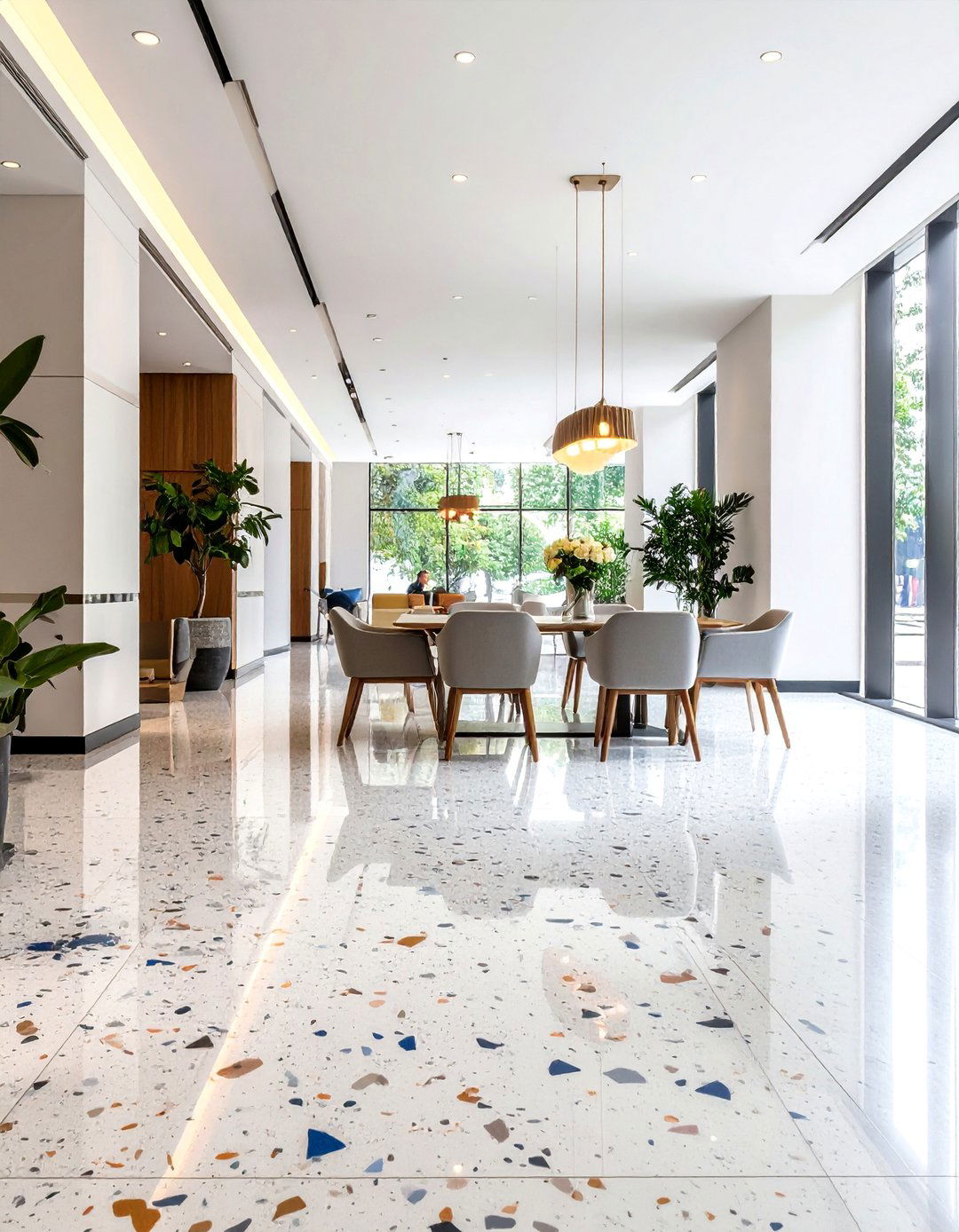
Combining artistry with functionality, terrazzo concrete floors feature decorative aggregates set in cement or epoxy matrices for stunning mosaic effects. Modern thin-set epoxy terrazzo applies at only 1/4 to 3/8 inch thickness compared to traditional systems requiring 2-3 inches. This decorative flooring system combines epoxy resins with aggregates troweled at specific thicknesses to create durable, low-maintenance solutions. The aggregate options include marble chips, glass fragments, metals, and recycled materials that create brilliant color accents when revealed through polishing. Divider strips in zinc, brass, or colored plastic separate different terrazzo mixes for intricate designs. Epoxy terrazzo provides superior durability, chemical resistance, and flexibility compared to cement-based systems. Perfect for commercial lobbies, healthcare facilities, and upscale residences, terrazzo concrete floors offer unlimited design possibilities with exceptional longevity. This system offers a 40-year life expectancy with the lowest life-cycle cost of any hard floor surface.
5. Stamped Concrete Floors Mimicking Natural Materials
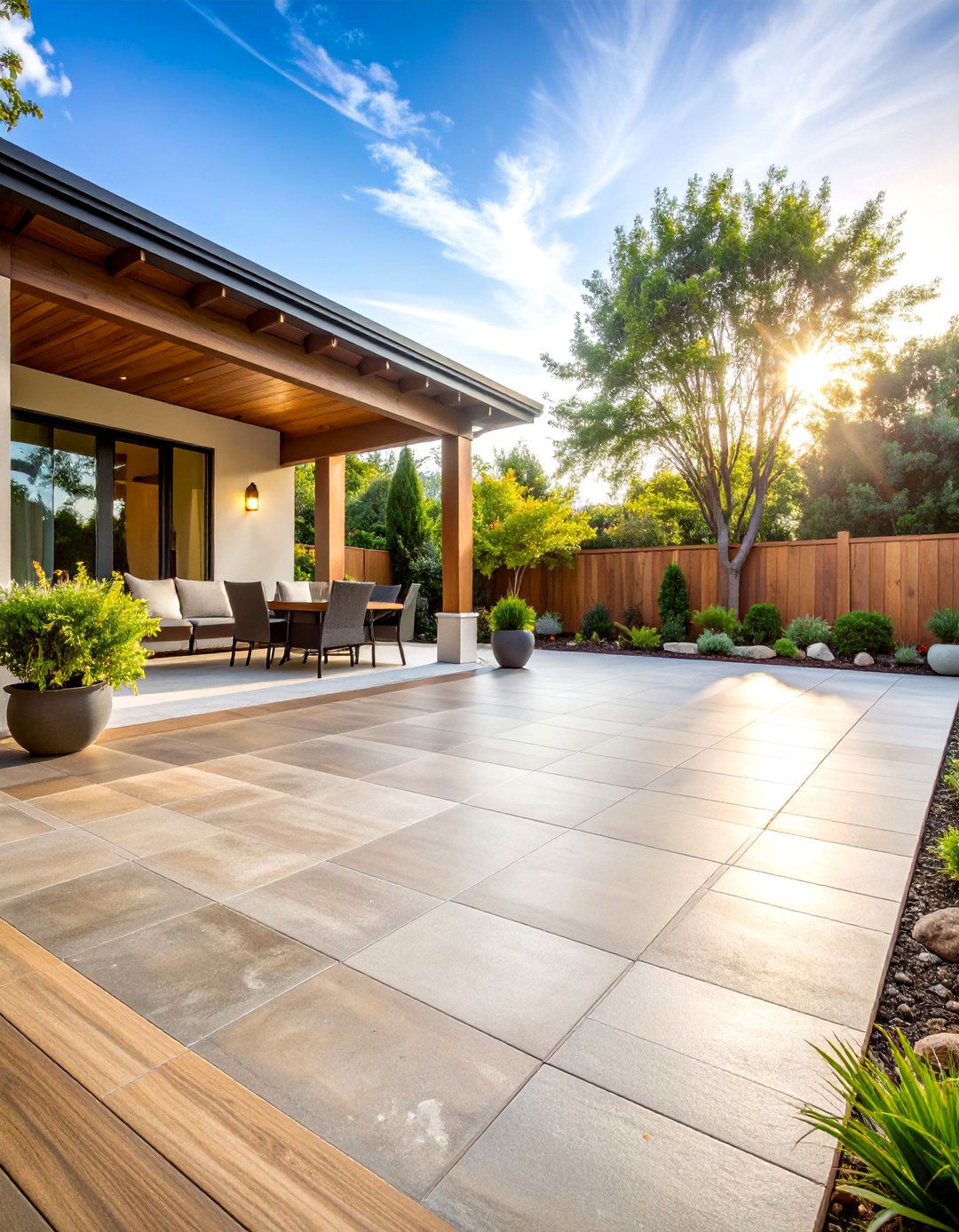
Bringing outdoor aesthetics indoors, stamped concrete floors replicate the appearance of stone, brick, wood, and tile through textured patterns and coloration. Stampable overlays applied at up to 3/4 inch thickness use the same stamping mats and texturing skins as traditional stamped concrete. Concrete stamping creates faux wood floors using rubber stamps designed to give engineered wood texture, along with stone, brick, cobblestone, or flagstone patterns. This technique combines integral colors, release agents, and texture tools to achieve realistic surface appearances. Texturing skins produce seamless textures with no grout lines while mats create deeper patterns with well-defined lines. The process involves applying base colors, positioning stamps, and adding antiquing releases for authentic weathered effects. Wood stamped concrete flooring offers the appearance of wood with concrete's strength and durability. Ideal for patios, basements, and commercial spaces, stamped concrete floors provide luxury material aesthetics at reasonable costs.
6. Stenciled Concrete Floors with Custom Patterns
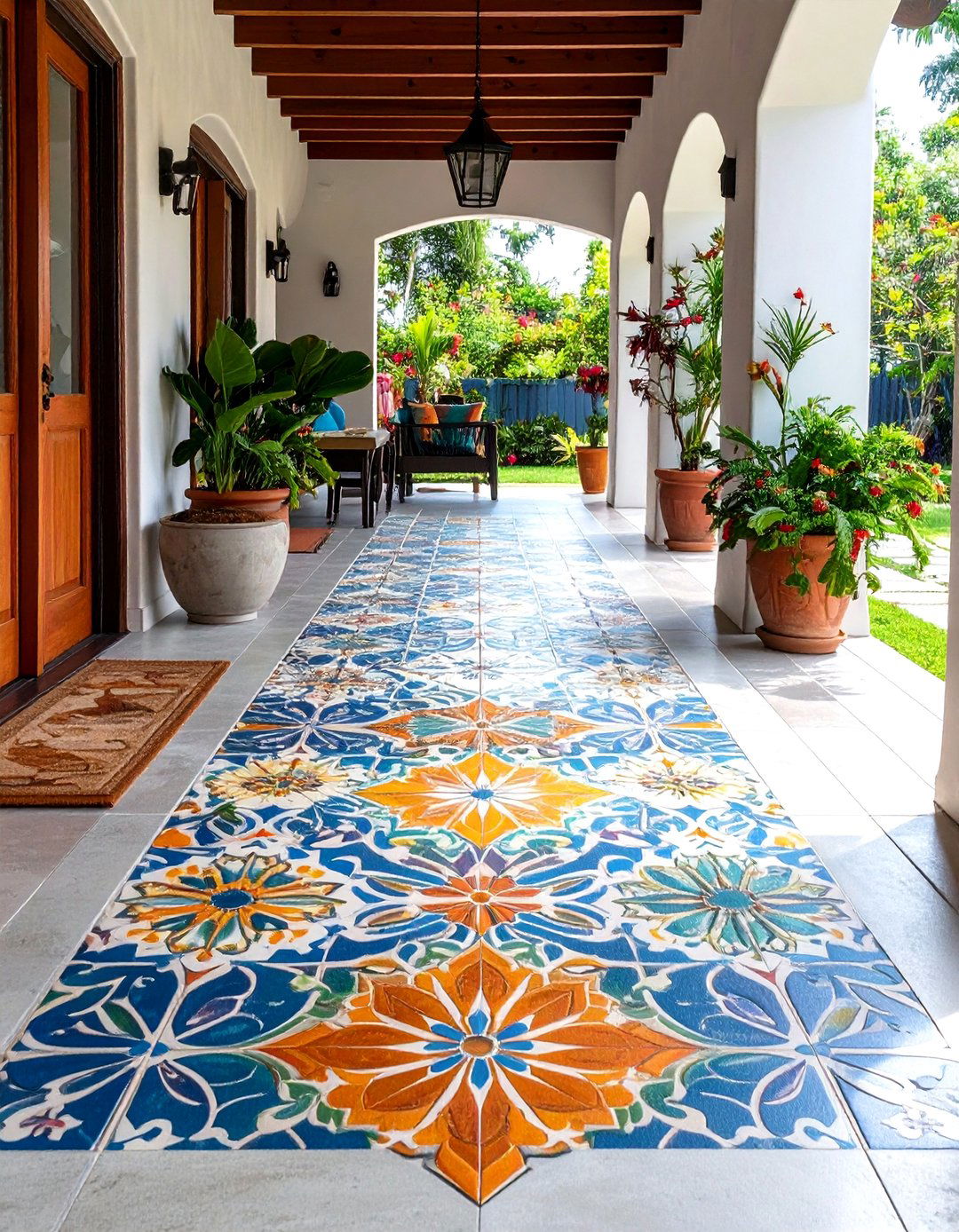
Unleashing creative possibilities, stenciled concrete floors allow precise pattern application through reusable templates that create intricate designs cost-effectively. Decorative concrete stencils create stone, brick, or tile appearances at fractions of real material costs. Stenciling concrete is an inexpensive way to add style to utilitarian floors while hiding imperfections and wear. The application involves cleaning surfaces, applying base colors, positioning stencils, and adding contrasting colors through brushes or sprays. Available in paper and plastic with at least 134 different patterns, stencils work with extensive color palettes for unique custom designs. The best stencils are 1/8-inch or 1/16-inch low-density polyethylene plastic that lay flat for crisp, clear messages. From geometric patterns to traditional motifs, stenciled concrete floors offer unlimited design flexibility. Stencils can create concrete carpet effects, borders, or full-floor patterns using simple techniques. Perfect for residential spaces, retail environments, and artistic installations.
7. Microcement Overlay Concrete Floors with Smooth Finishes
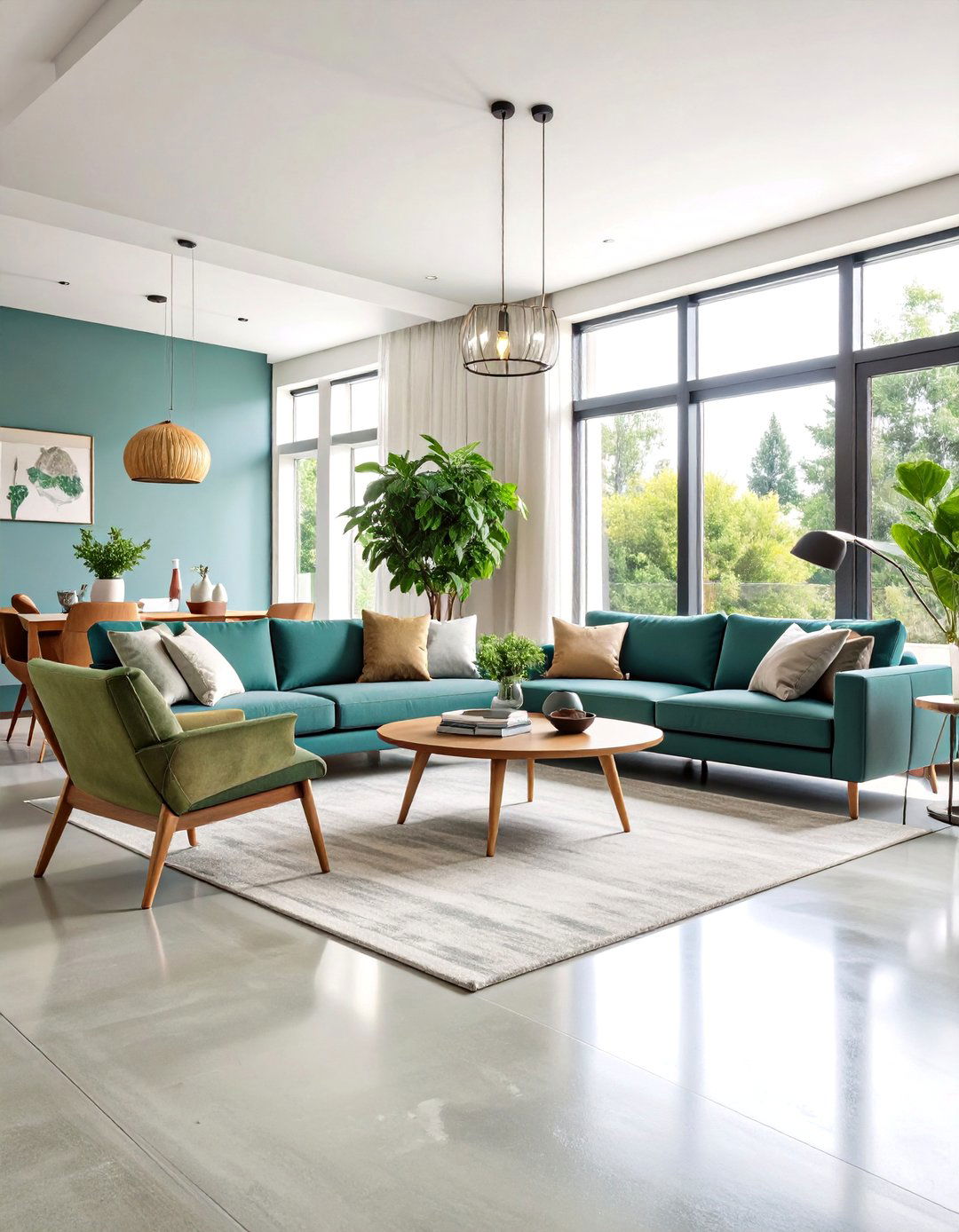
Providing fresh surfaces over existing concrete, microcement overlay concrete floors deliver ultra-smooth finishes that serve as perfect canvases for decorative treatments. Micro-topping creates exceptionally smooth tight-troweled finishes that provide new blank canvases for decorative concrete floors. Microcement systems replicate polished concrete appearances using fine aggregates with cement binders applied at 5mm-15mm thicknesses. These thin applications restore damaged surfaces while concealing cracks, stains, and imperfections that would show through traditional treatments. Surface preparation requires clean, profiled substrates with proper concrete surface profiles established by industry standards. Despite thin applications, these overlays are highly durable, abrasion-resistant, and designed for heavy foot traffic. Available in multiple colors and textures, microcement overlays transform tired concrete into contemporary surfaces. Our product hardens and cures rapidly at around 10 times the rate of regular concrete. Suitable for floors, walls, and countertops in residential and commercial applications.
8. Exposed Aggregate Concrete Floors with Natural Texture

Revealing hidden beauty within concrete, exposed aggregate concrete floors showcase decorative stones and materials through specialized finishing techniques that create stunning textured surfaces. Exposed aggregate floors are ground down to reveal materials floating in the concrete mix, offering modern speckled finishes similar to traditional terrazzo. The process involves removing surface cement paste through washing, sandblasting, or grinding to expose underlying aggregates. Sandblasting removes top concrete surfaces not masked by stencils, creating raised patterns with varying aggregate exposure depths. This style disguises wear and tear signs like scratches and stains while providing attractive speckled appearances. Aggregate choices include local stones, colored gravels, glass chips, and recycled materials that reflect regional character. These finishes are compatible with broom textures, color hardeners, and regular flatwork applications. The resulting surfaces offer excellent slip resistance and durability for both interior and exterior applications. Perfect for driveways, patios, and commercial walkways requiring attractive, functional surfaces.
9. Painted Concrete Floors with Protective Coatings
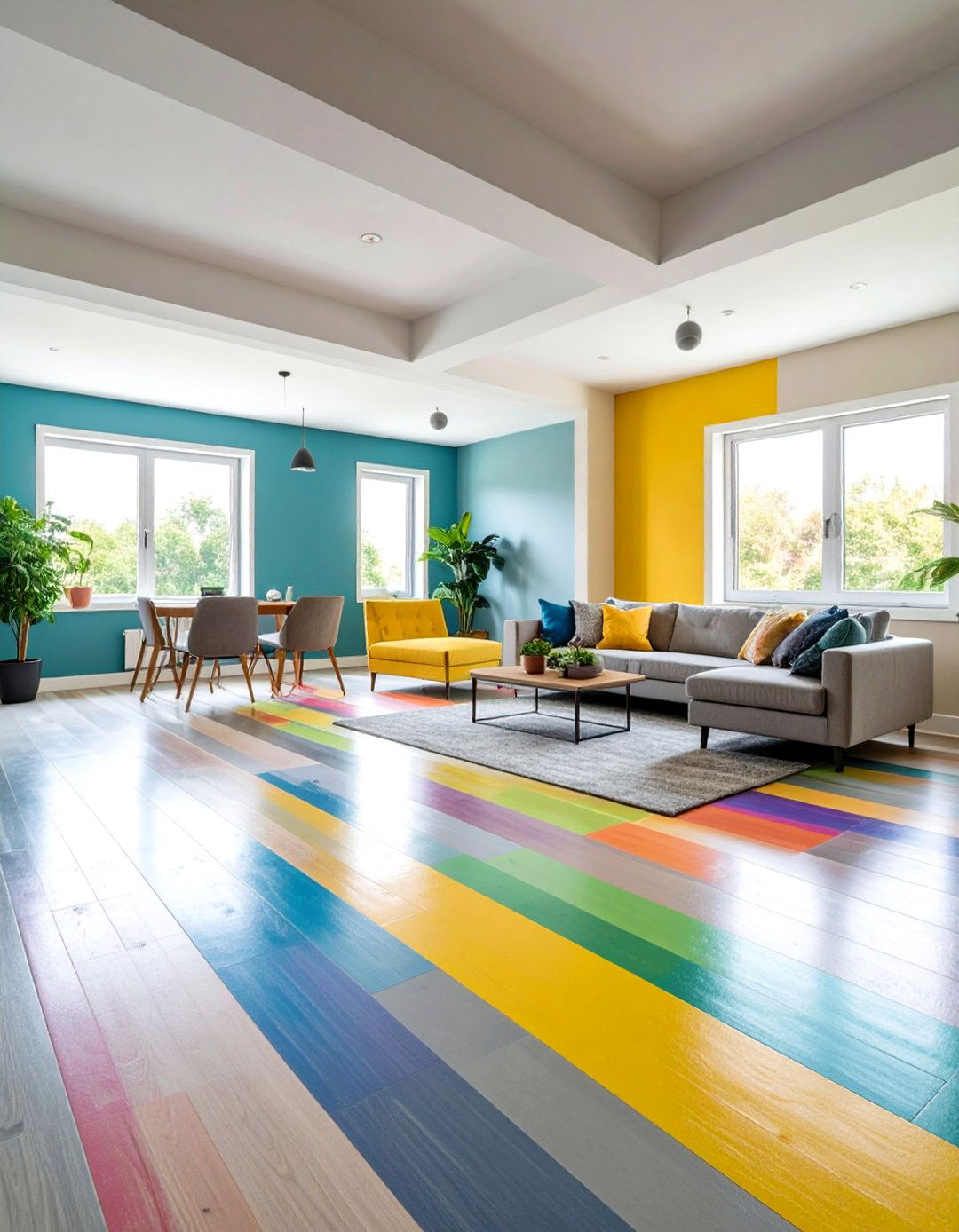
Offering affordable transformation solutions, painted concrete floors provide immediate color changes and protective benefits through specialized concrete paints and coating systems. Durable paints designed for concrete applications extend longevity and reduce damage from traffic, with epoxy being moisture-tolerant and polyurethane offering superior impact resistance. Surface preparation involves cleaning, etching, and priming to ensure proper paint adhesion and uniform coverage. The process requires cleaning concrete of dust, dirt, grease, and adhesive residue before applying base coats with nylon rollers. Floor painting over concrete involves cleaning thoroughly, applying adhesive primers, and starting with favorite paint colors. Multiple coat systems provide enhanced durability and color depth compared to single applications. Base color applications can be followed by various faux patterns and techniques before applying clear sealers. Available in countless colors and finishes, painted concrete floors suit residential basements, commercial spaces, and industrial facilities. Regular maintenance with appropriate sealers extends service life and appearance retention.
10. Concrete Floor Overlays with Decorative Finishes

Revolutionizing surface restoration, concrete floor overlays provide comprehensive solutions for damaged or outdated concrete through polymer-modified materials that accept various decorative treatments. Cement-based overlays can be placed over vinyl flooring, tile, or wood with proper surface preparation. Higher-build materials like underlayments or self-leveling overlays apply at 1/4 inch or greater thicknesses for severely damaged concrete. These systems bond mechanically and chemically to substrates while providing smooth, level surfaces for subsequent decorative treatments. Microtoppings and skim coats achieve wide decorative finish varieties using hand trowels, floats, rollers, and rubber squeegees. Application techniques include spraying, troweling, and stamping depending on desired textures and patterns. For concrete in poor condition, densifiers improve hardness while resurfacing overlays hide underlying imperfections before polishing. When properly applied and well-protected by sealers, overlays should last indefinitely under heavy traffic. Perfect for rehabilitation projects requiring complete surface renewal.
11. Metallic Epoxy Concrete Floors with Shimmering Effects

Creating dramatic visual impact, metallic epoxy concrete floors incorporate special pigments and application techniques that produce flowing, three-dimensional effects resembling natural marble or abstract art. Metallic concrete flooring adds sparkle and bling using various metallic shades from chrome and copper to rose gold and silver. The application process involves base coats, metallic pigment layers, and topcoats applied through specialized techniques that encourage color movement and blending. Metallic epoxy creates dramatic mirror and high-polish looks but requires careful installation and artistic touches. Metallic paint, concrete dyes, or epoxy coatings create impressive looks perfect for parties and special occasions. These floors suit both sleek modern spaces and rustic traditional environments through versatile color combinations. The mirror-like finish is prone to micro-scratches and may not handle hard object drops well in high-traffic areas. Professional installation ensures optimal results and longevity. Perfect for upscale residences, retail spaces, and entertainment venues requiring stunning visual statements.
12. Dyed Concrete Floors with Vibrant Color Options
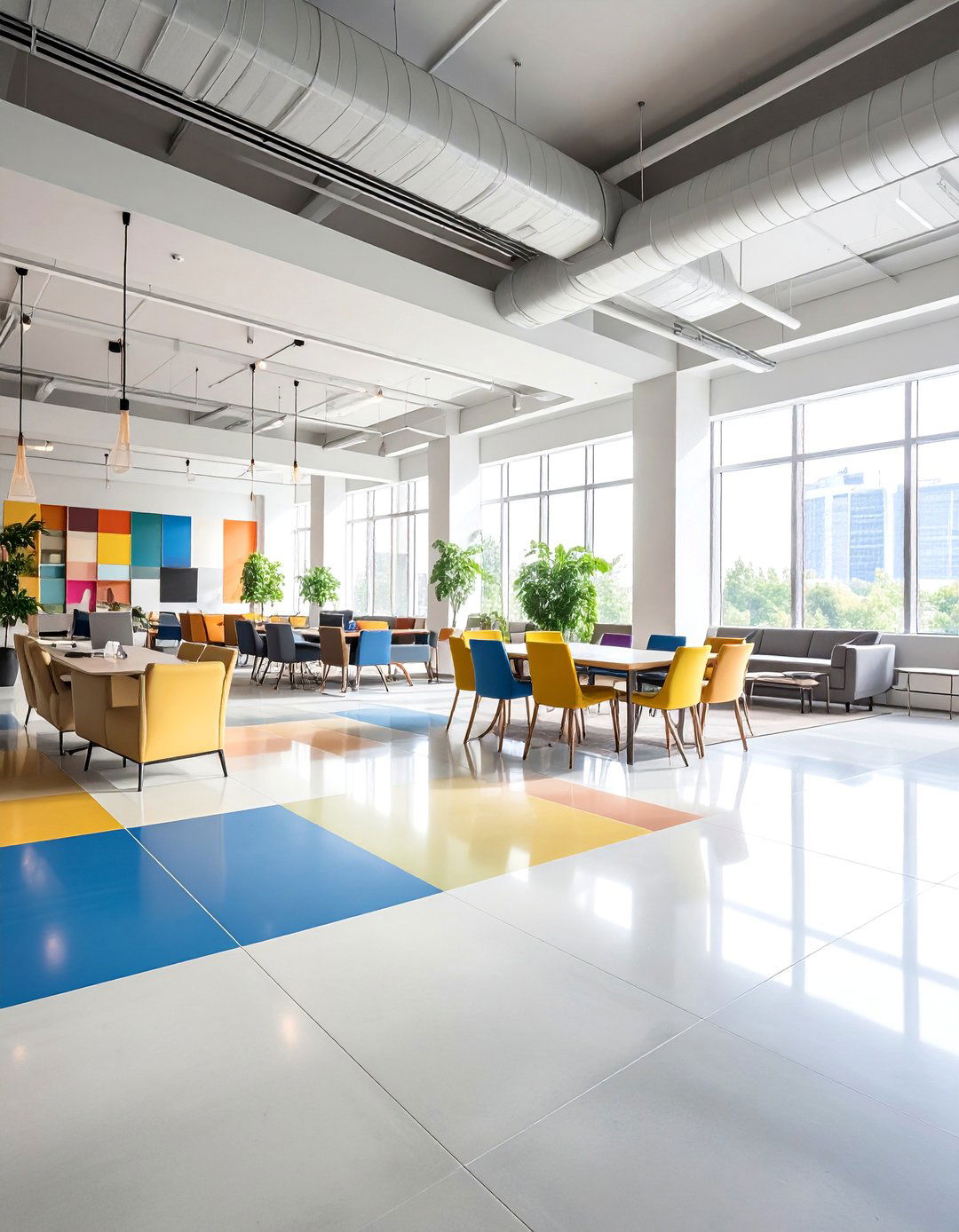
Delivering intense coloration possibilities, dyed concrete floors utilize water-based or acetone-based dyes that penetrate concrete surfaces to create uniform, fade-resistant colors in virtually unlimited hues. Water-based stains deposit fine pigments onto surfaces, allowing full spectrum vibrant colors from soft pastels to bold, rich hues. Acetone concrete dyes create consistent colors and are easily controlled, with pigments absorbed by concrete slabs. Unlike acid stains, water-based stains provide predictable, uniform finishes ideal for corporate logos and decorative features. Acetone dyes in polished concrete are more color-uniform than acid stains and penetrate cement paste down to sand particles. The application allows layered or single colors in less time than traditional staining methods. Available in wide color varieties, these dyes can be mixed to achieve even more options. However, because they don't penetrate and bond chemically, water-based stains are less durable than acid stains outdoors. Ideal for interior commercial and residential applications requiring specific color matching.
13. Sealed Raw Concrete Floors with Industrial Aesthetics

Embracing minimalist design principles, sealed raw concrete floors showcase concrete's natural beauty through protective sealers that enhance durability while maintaining authentic industrial character. The raw look of concrete is wildly appealing when seeking authentic aesthetics, providing blank canvases enhanced with furniture, wall colors, and decor. Raw concrete floors are inherently masculine and frequently used in modern spaces where aesthetics are contemporary. Surface preparation involves cleaning and minor repairs before applying penetrating or topical sealers that protect against stains and moisture. Polished concrete floors work within neutral color schemes and marry stark contrasts between black details and crisp whites. If decorating styles are more rustic, consider complementing concrete floors with natural wood elements. The resulting surfaces retain concrete's inherent texture and color variations while gaining enhanced durability and cleanability. Concrete floors fit with raw, natural surroundings like stone walls, feeling modern yet blending seamlessly with nature. Perfect for loft spaces, modern homes, and commercial environments celebrating industrial design.
14. Decorative Concrete Floor Patterns with Geometric Designs
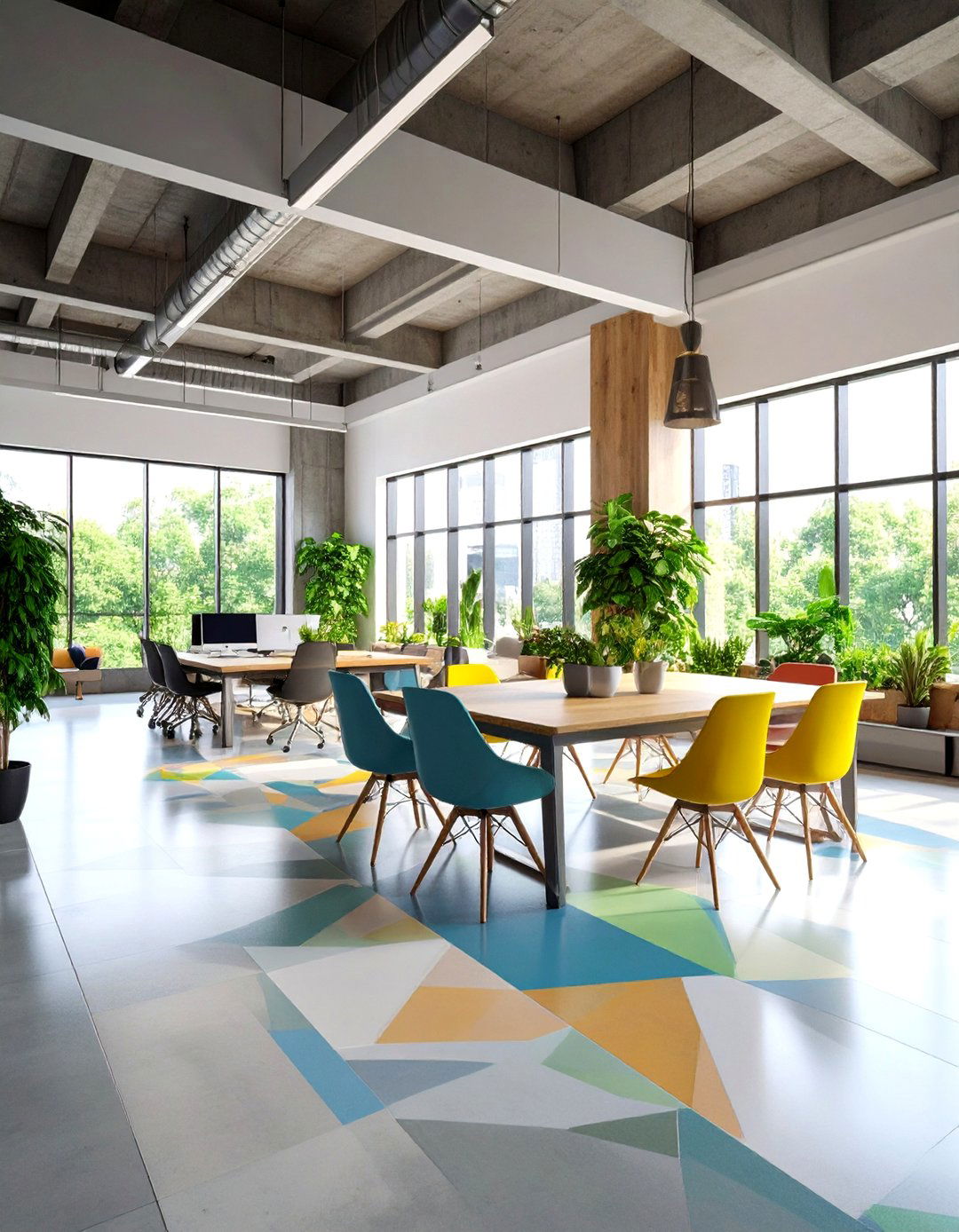
Incorporating mathematical precision into flooring design, decorative concrete floor patterns utilize scoring, inlays, and contrasting materials to create sophisticated geometric layouts that enhance architectural aesthetics. Concrete floors can be combined with different materials to zone rooms or add interesting design details. Techniques include saw-cutting patterns, installing metal divider strips, and using contrasting colors or materials to define geometric shapes. Floor-to-ceiling glass doors and walls accentuate concrete flow between indoor and outdoor spaces. Polished concrete plinths can be used under modern fireplaces while forming flooring for adjacent stairs. Pattern options range from simple grid layouts to complex geometric compositions incorporating multiple design elements. Installation requires precise measuring, marking, and cutting to achieve crisp, professional results. Divider strips can be placed above concrete joints or used decoratively to separate colors and create accent features. The technique allows unlimited creativity while maintaining concrete's practical benefits. Suitable for contemporary residences, corporate offices, and retail environments requiring distinctive floor designs that complement modern architecture.
15. Concrete Floor Color Gradients with Artistic Transitions

Achieving sophisticated color effects, concrete floor color gradients utilize multiple stains or dyes applied through specialized techniques that create smooth transitions between different hues for artistic visual impact. Color gradients in concrete flooring make homes appear more spacious, with darker shades creating depth illusions while lighter ones provide airy, open feelings. The process involves careful planning, masking, and application timing to achieve seamless color blending without harsh demarcation lines. Painting or adding stains to flooring creates unique, beautiful color combinations that show off personality and style. Different acid stains can be worked into floors to achieve desired colors, being more effective when transitioning from light to dark. Professional application ensures consistent results and proper color development throughout gradient zones. Using mild acid solutions allows color removal and reworking to achieve desired effects. The technique requires artistic skill and experience to achieve professional results. Perfect for galleries, upscale retail spaces, and contemporary homes requiring unique flooring statements that serve as functional art installations.
16. Marble Effect Concrete Floors with Luxurious Appearance
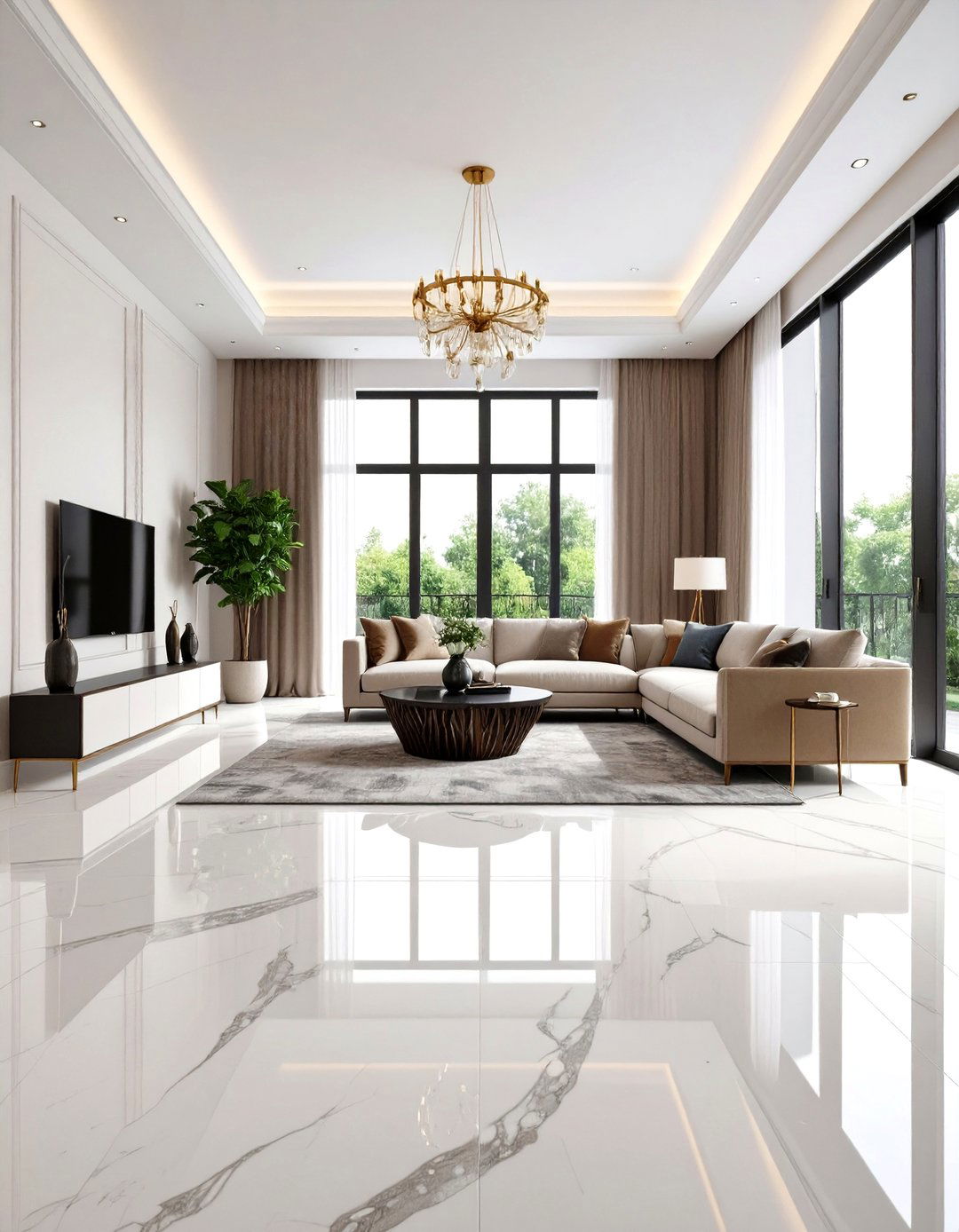
Replicating high-end stone aesthetics, marble effect concrete floors utilize specialized coatings and application techniques to create sophisticated surfaces that mimic natural marble patterns at fraction of authentic material costs. Marble effect coatings can be painted over or added to polished concrete to create stunning looks that impress visitors affordably. This type of flooring is very durable and long-lasting, making it a great investment suitable for business lobbies and living rooms. Application involves base coats, veining techniques using specialized tools, and protective topcoats that enhance depth and durability. Acid-stained concrete can be transformed to create refined looks, textures, or feels resembling natural stone, marble, or weathered leather. For floors, polymer-modified overlays can be stained to resemble marble appearances when installed over wood subfloors. Professional installation ensures realistic marble patterns and proper color development. Painting costs are cheaper than actual marble while providing similar visual impact. The technique combines artistry with practicality for stunning results. Ideal for luxury residences, upscale commercial spaces, and hospitality environments requiring elegant flooring solutions without marble's high costs and maintenance requirements.
17. Concrete Floor Divider Strips with Accent Features
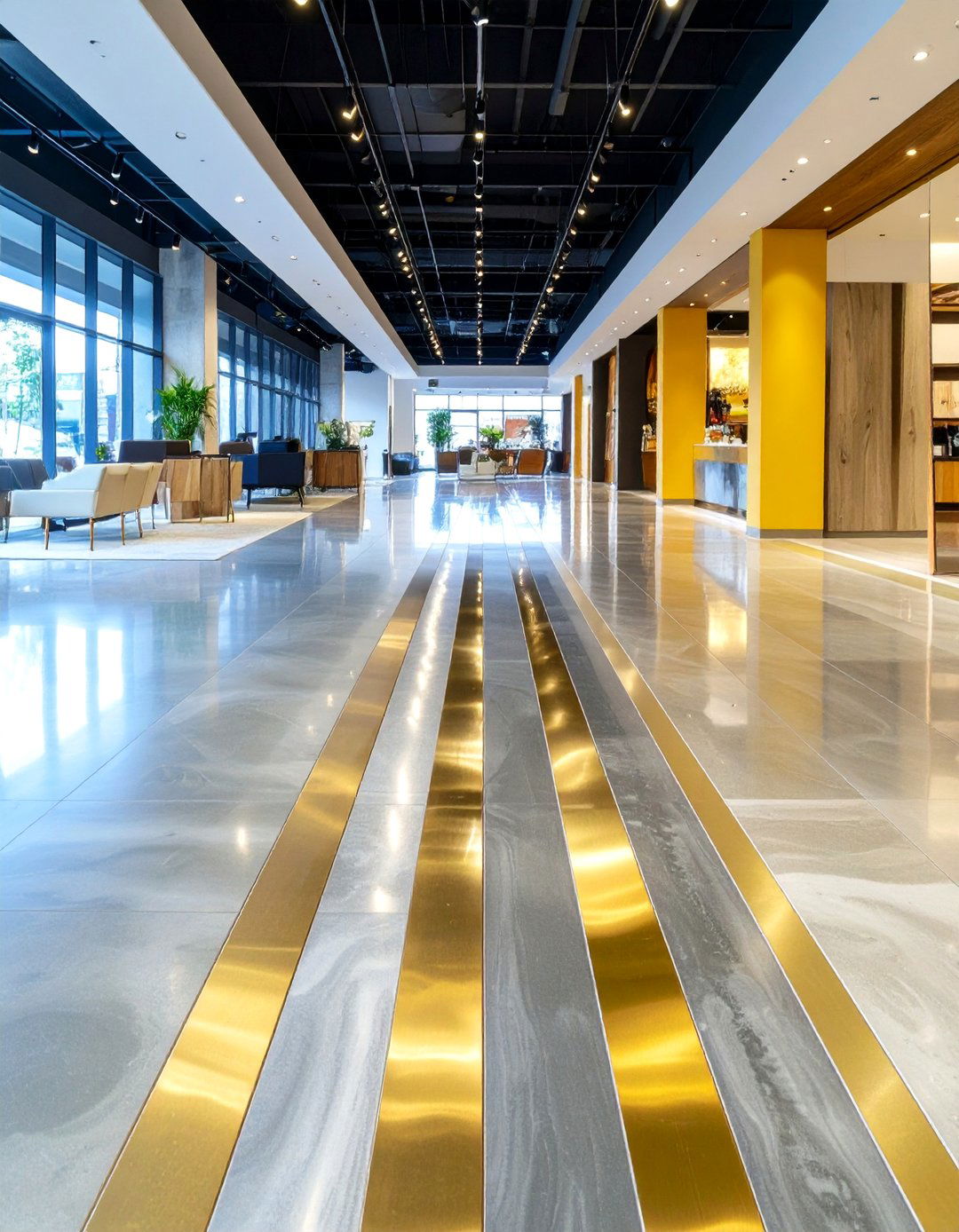
Adding structural and decorative elements, concrete floor divider strips create visual interest while serving practical functions like accommodating building movement and defining space transitions through strategic material placement. Divider strips vary in width from 18 gauge to 1/2 inch and can be zinc, brass, or colored plastic materials. Divider strips can be bent on-site for intricate jobs, with contractors sometimes bringing artists to draw designs directly on floors as templates. These elements accommodate concrete expansion joints while providing opportunities for creative design expression through contrasting materials and patterns. Dividers placed precisely above concrete joints prevent cracking while others serve purely decorative purposes. Installation requires careful planning to align strips with structural requirements and aesthetic goals. Two divider strips back-to-back form control joints in terrazzo directly above concrete slab control joints. The technique allows mixing different concrete colors or materials within single floors for sophisticated results. Systems must follow ACI 302.1 R.89 Concrete Joint Placement requirements to prevent cracking. Perfect for large commercial spaces, retail environments, and contemporary residences requiring functional design elements.
18. Textured Concrete Floors with Surface Variations

Creating tactile interest and visual depth, textured concrete floors incorporate surface treatments that provide slip resistance while adding aesthetic appeal through varied finishing techniques and tool applications. Decorative finishes range from ultra-smooth to heavily textured depending on overlay systems and application tools. Knock-down textures are popular finishes for spray-applied toppings created using specialized equipment. Techniques include broom finishing, trowel texturing, stamping, and spray applications that create consistent or random surface patterns. Ultra Deck systems provide anti-skid finishes designed as leveling systems that can receive subsequent decorative layers. Applications can achieve slop-trowel unique finishes, faux slate tiles, or custom themed overlays. Professional application ensures consistent texture distribution and proper surface preparation for optimal results. Textured finishes are compatible with exposed aggregate, broom finishes, light texture skins, and color hardeners. These surfaces provide enhanced safety through improved slip resistance while maintaining attractive appearances. Suitable for pool decks, commercial walkways, and residential patios requiring both functionality and aesthetic appeal in challenging weather conditions.
19. Radiant Heated Concrete Floors with Comfort Technology
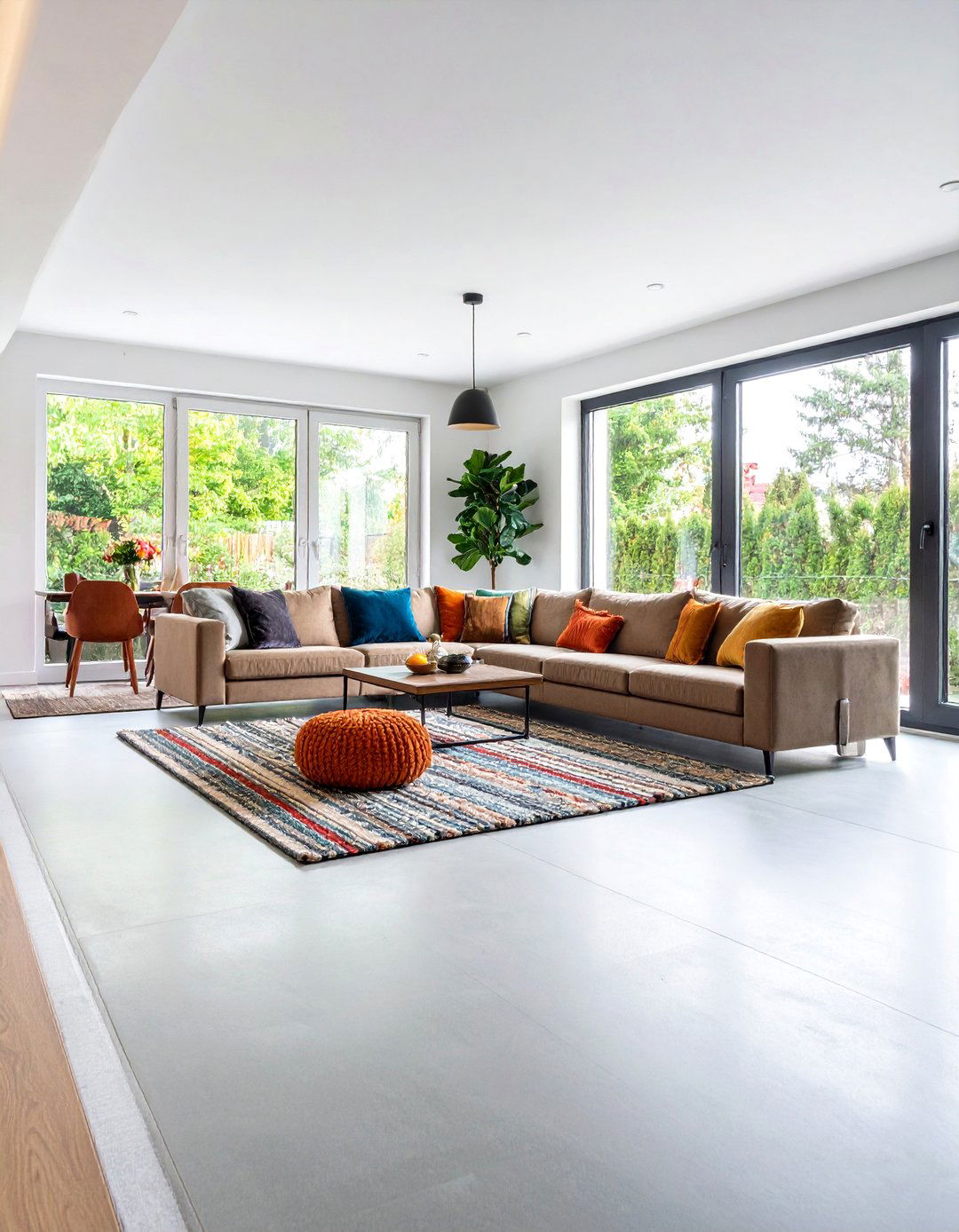
Combining luxury with functionality, radiant heated concrete floors integrate heating systems beneath concrete surfaces to provide energy-efficient warming that enhances comfort while maintaining all concrete's aesthetic and practical benefits. Radiant floor heating embeds electric coils or water-filled tubes directly into concrete slabs, turning them into large, gentle radiators. The durability of epoxy coatings makes them compatible with radiant floor heating regardless of heat transfer method. Using radiant heating with concrete floors reduces heat loss as concrete retains heat well, maintaining consistent temperatures longer. Installation requires careful planning to embed heating elements before concrete placement while ensuring proper insulation and controls. Radiant systems distribute heat evenly across floors, eliminating cold spots and ensuring comfortable environments. This efficiency comes from even heat distribution from ground up, reducing energy waste and supporting sustainability. Epoxy's thermal conductivity makes it excellent for distributing radiant heat evenly across floors. Perfect for luxury homes, commercial spaces, and any environment requiring comfortable, energy-efficient heating solutions integrated with attractive concrete flooring systems.
20. Industrial Style Concrete Floors with Urban Aesthetics
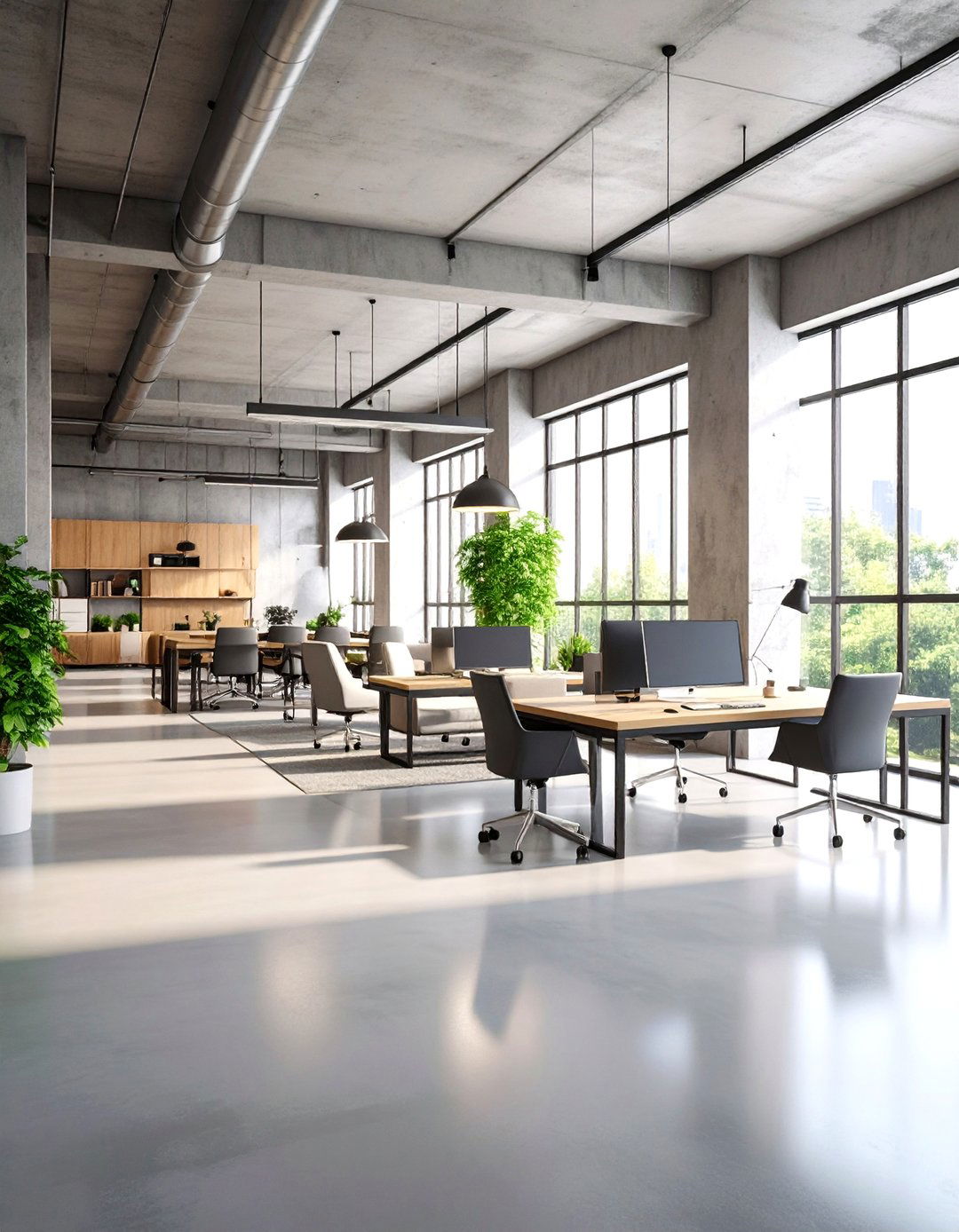
Celebrating utilitarian beauty, industrial style concrete floors embrace concrete's inherent characteristics while incorporating design elements that emphasize functionality, durability, and authentic urban character in contemporary settings. Concrete floors contribute to loft-like layouts with open floor plans while maintaining irresistibly sleek appearances. Concrete flooring appears in trendy retail spaces, upscale offices, and stylish households, lending industrial sophistication with added convenience. The smooth, polished aesthetic and texture makes concrete floors contribute to industrial open-concept layouts. Design elements include exposed mechanical systems, metal accents, and minimal color palettes that complement concrete's natural gray tones. Very light or very dark finishes in spaces up against concrete floors create different moods from cozy hunting lodge feels to open, modern atmospheres. Concrete pairs beautifully with colorful furnishings, offsetting softness of plush materials while providing structure. The style emphasizes honesty in material usage while creating sophisticated environments. Perfect for converted warehouses, modern lofts, contemporary offices, and residential spaces celebrating industrial design heritage through authentic material expression.
Conclusion:
Concrete floors prove that style need not come at the expense of convenience, offering cost-effective alternatives to expensive materials while guaranteeing years of use with minimal upkeep. From polished surfaces that rival marble to textured finishes that enhance safety, these twenty concrete floor ideas demonstrate the remarkable versatility of modern concrete flooring systems. When compared price-wise to marble, slate, and ceramic tile, concrete flooring provides economical alternatives with superior durability. Whether pursuing industrial aesthetics, luxury appearances, or practical solutions, concrete floors deliver unmatched value through innovative techniques that transform ordinary slabs into extraordinary design statements.


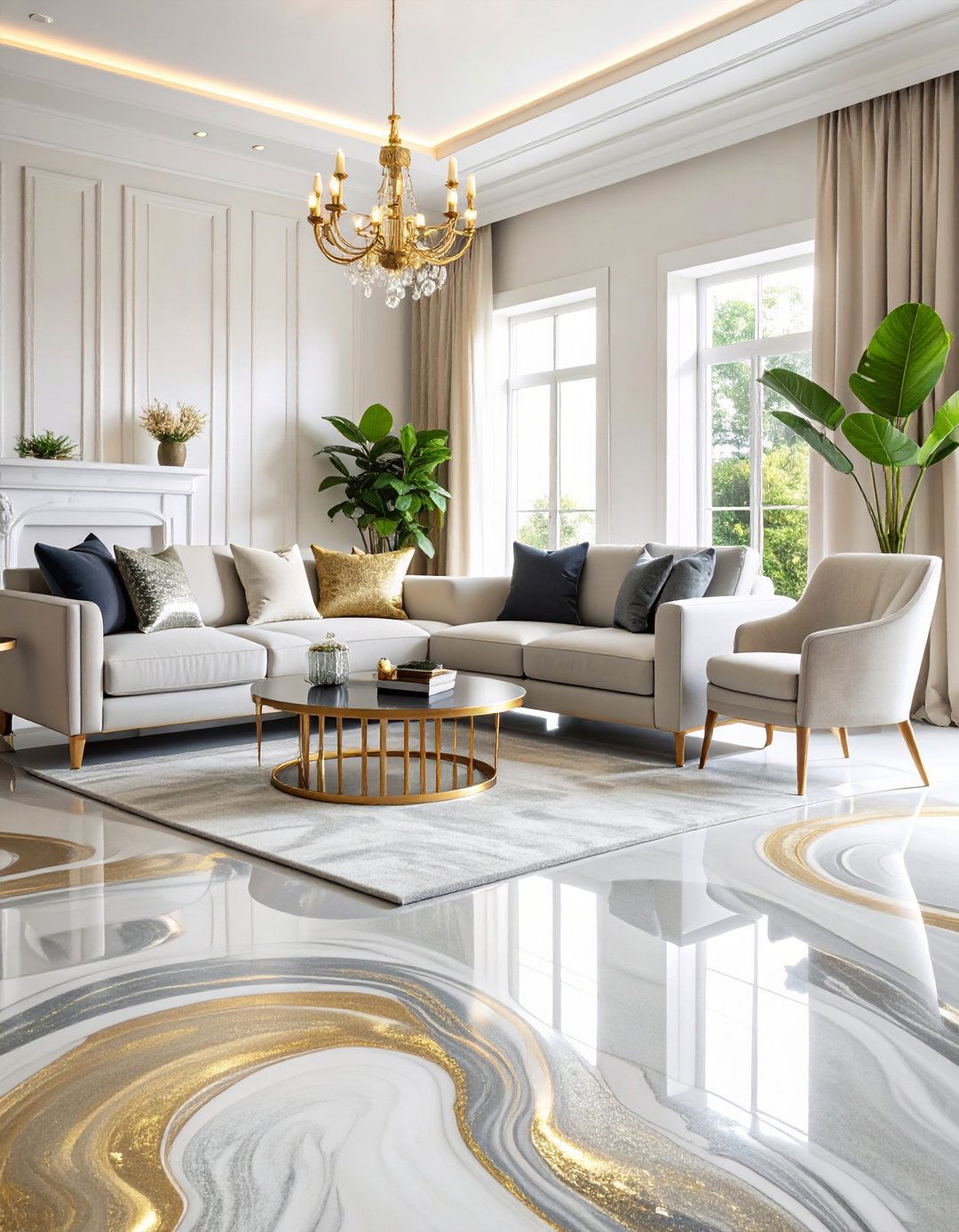
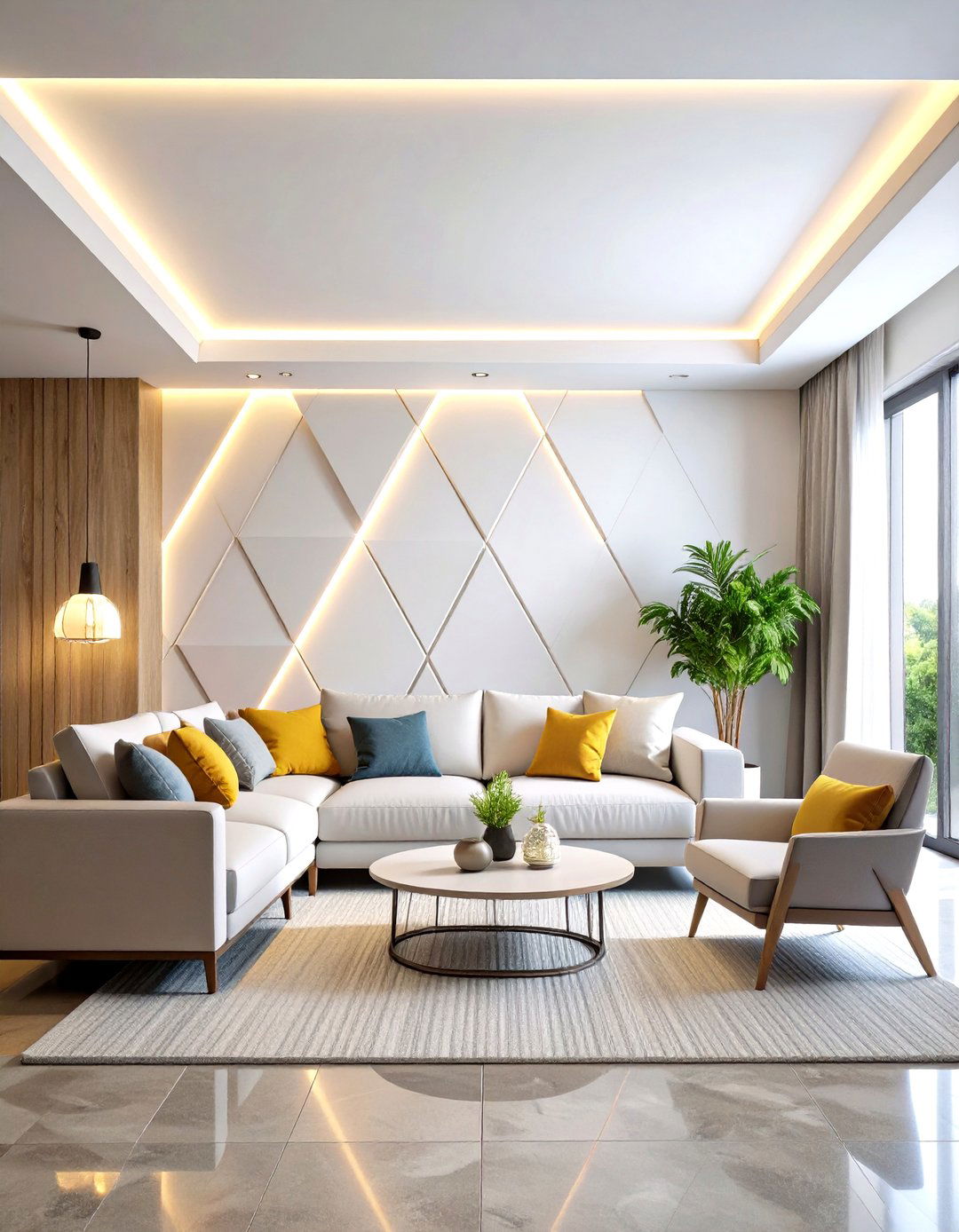
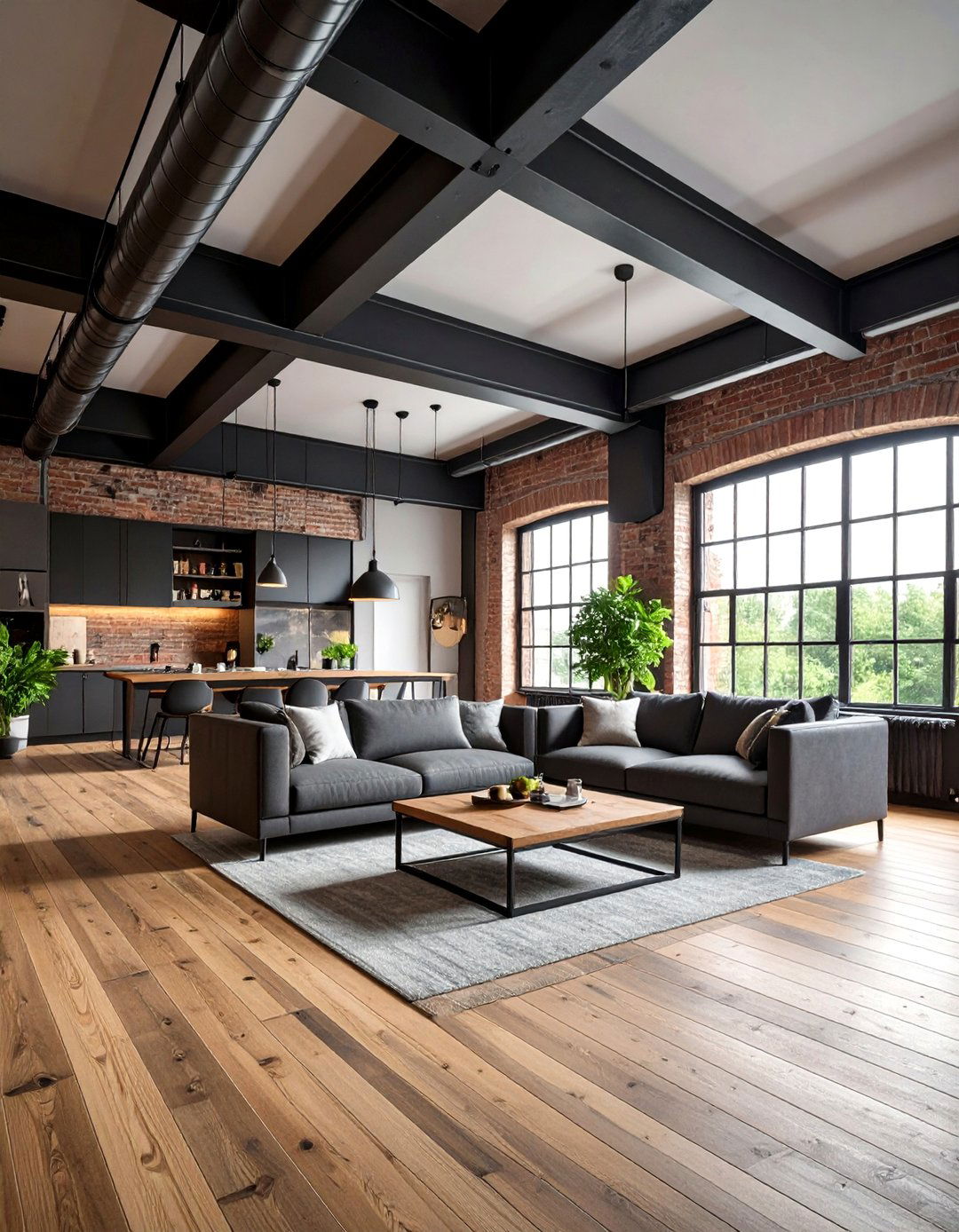
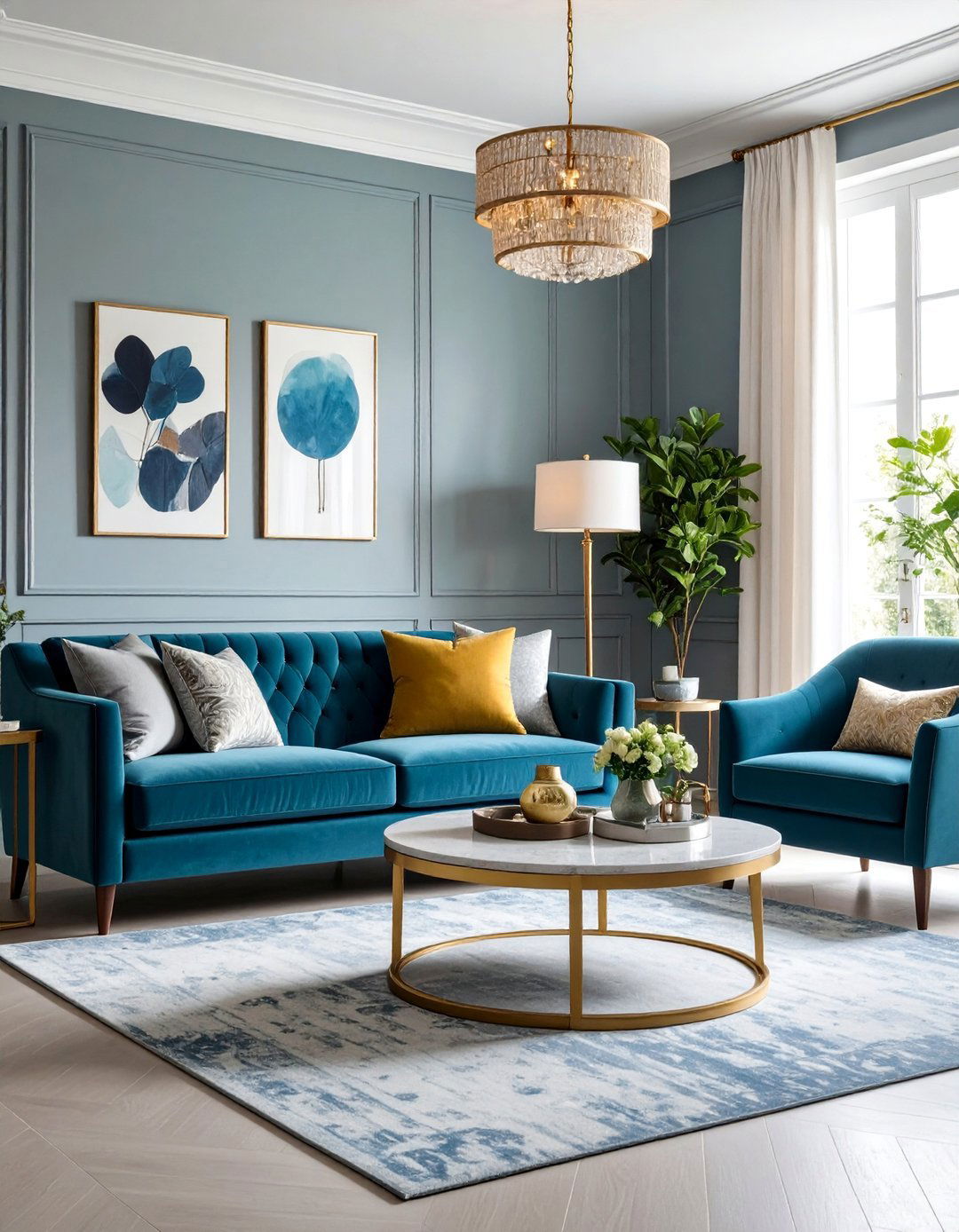
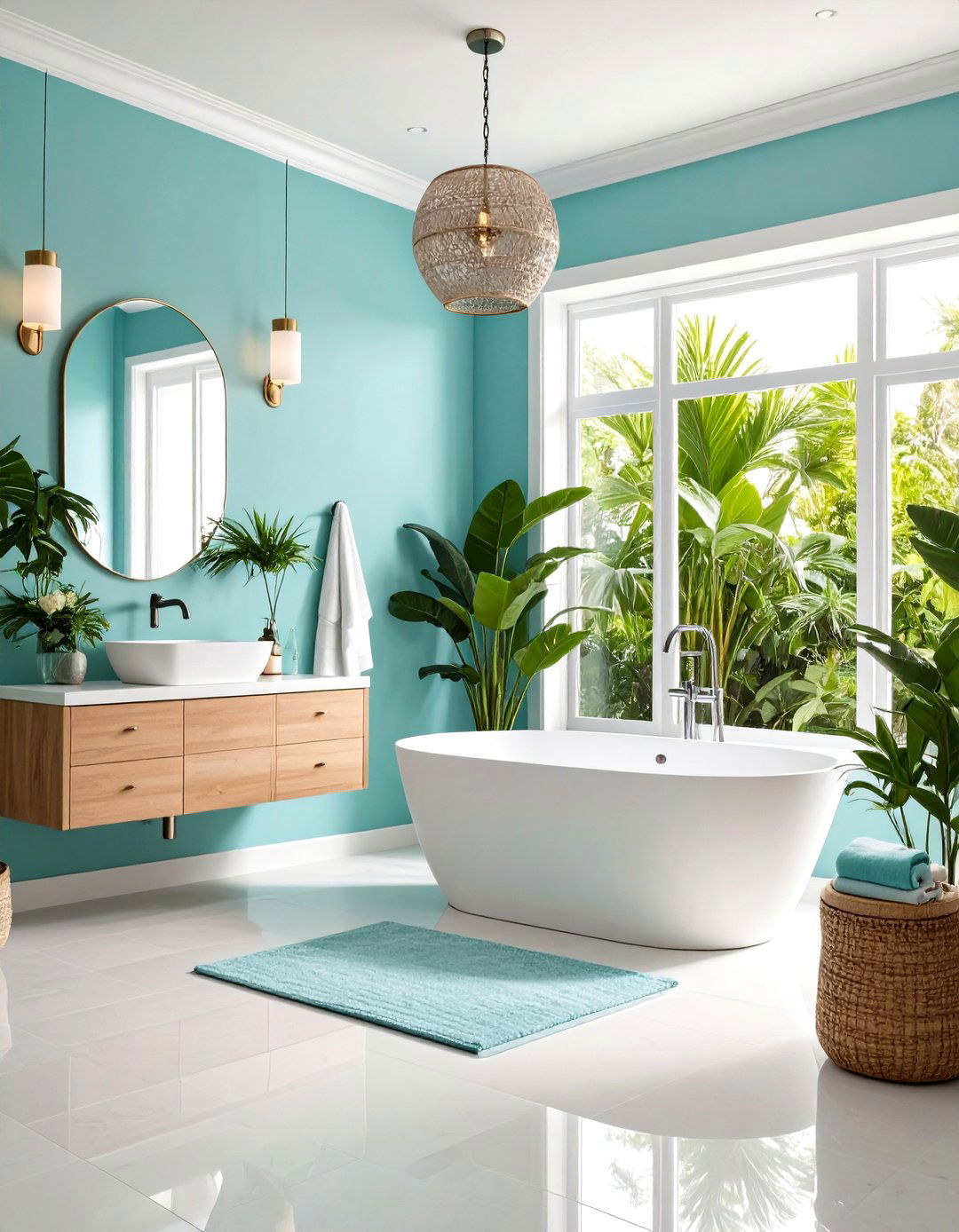
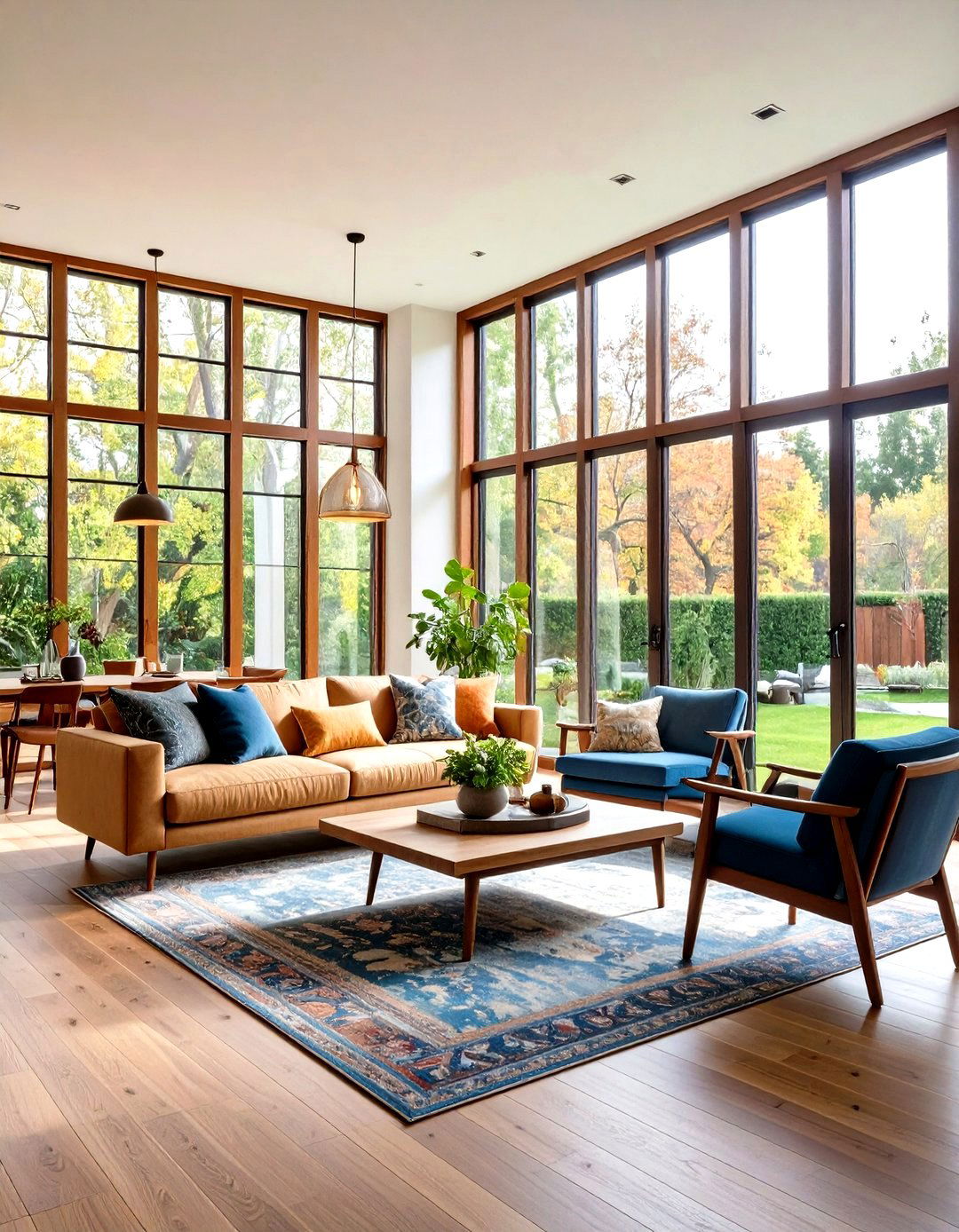
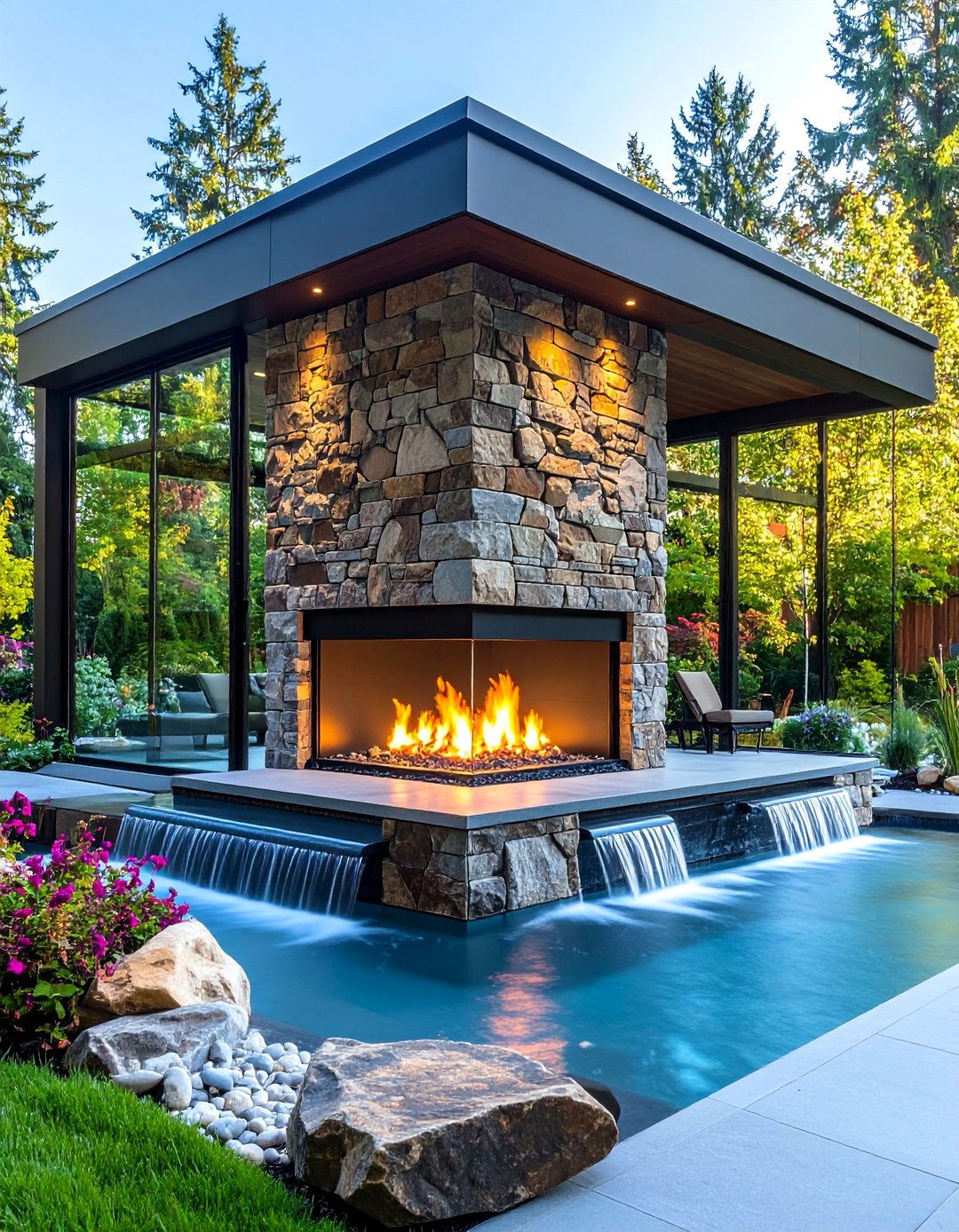



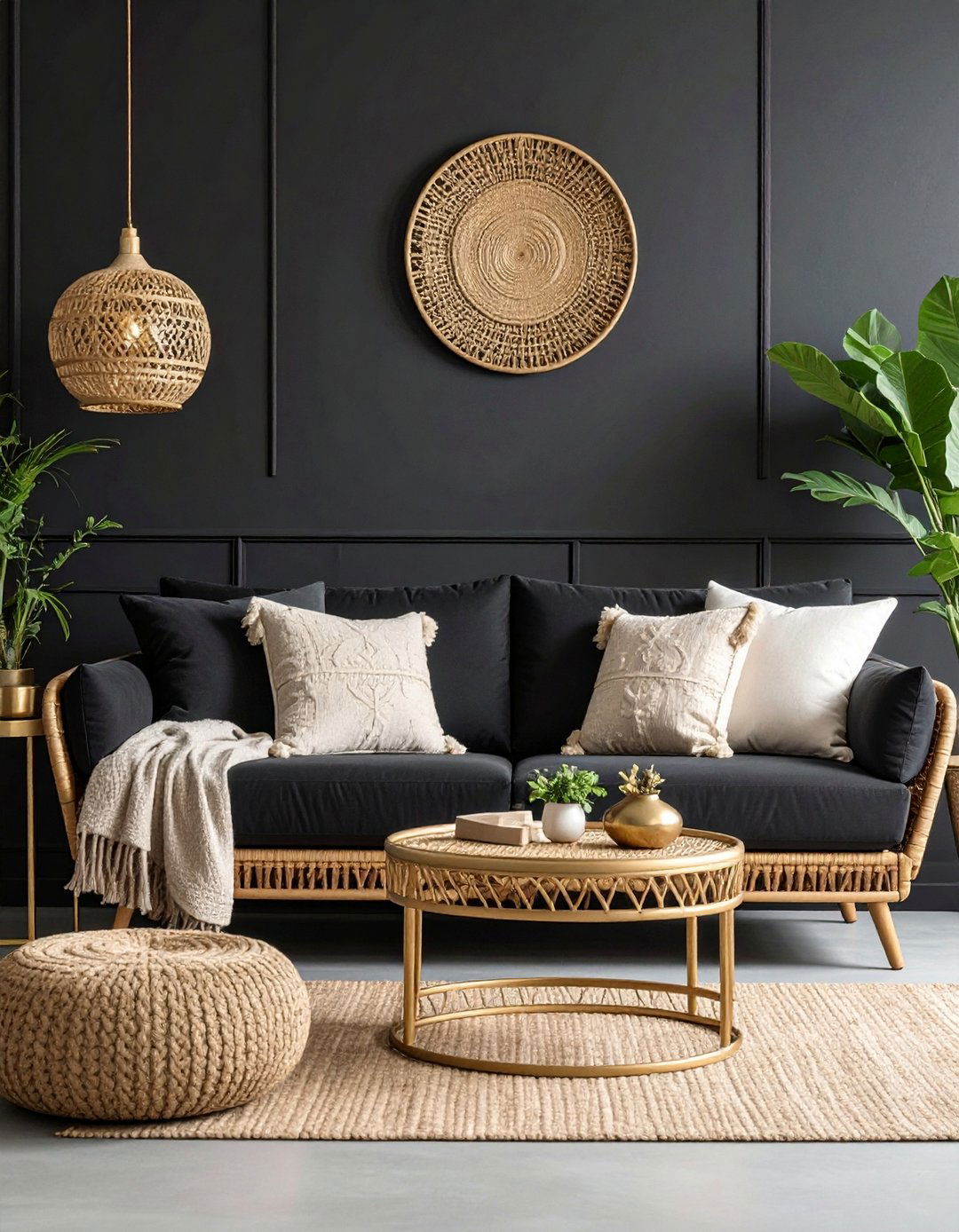
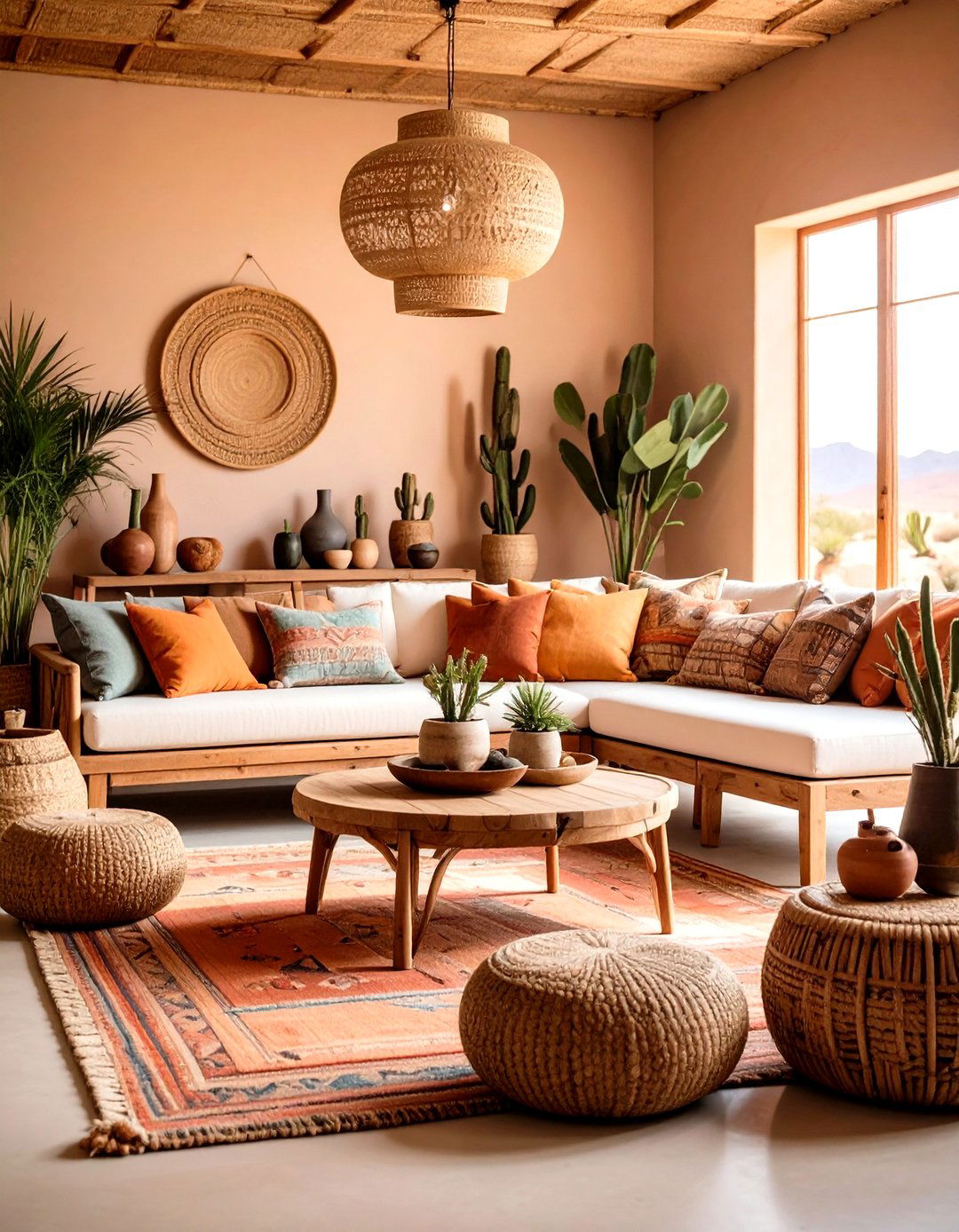
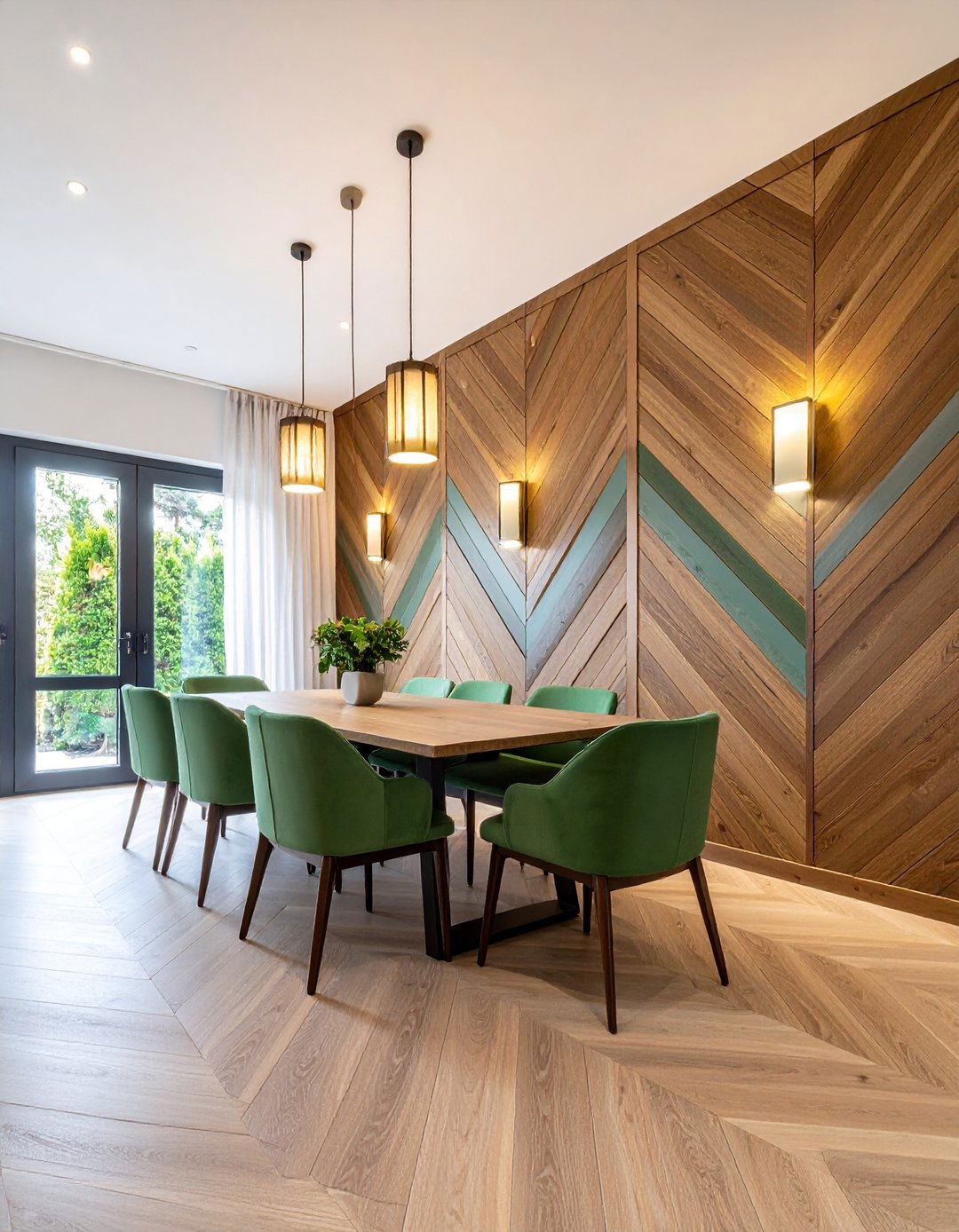
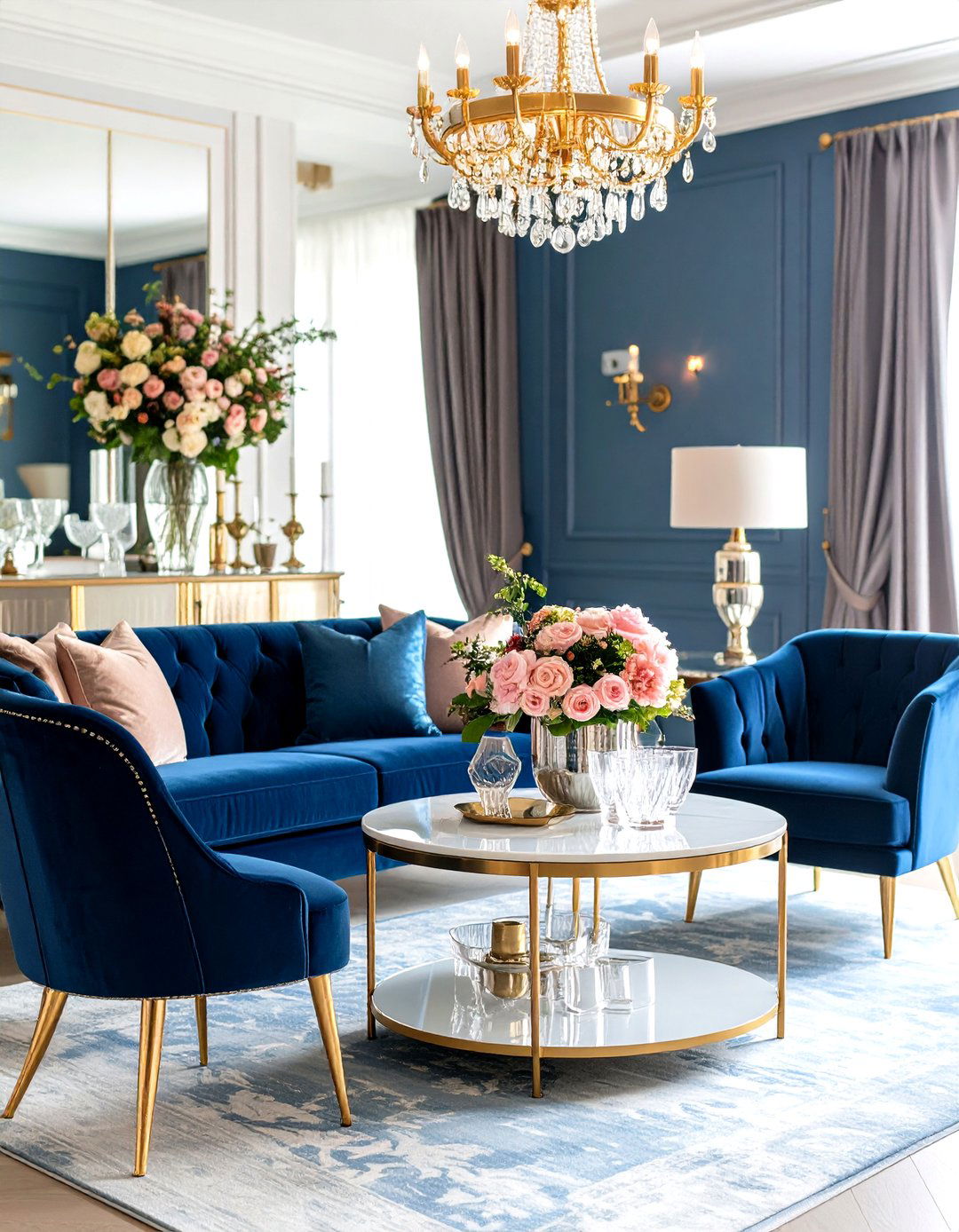
Leave a Reply